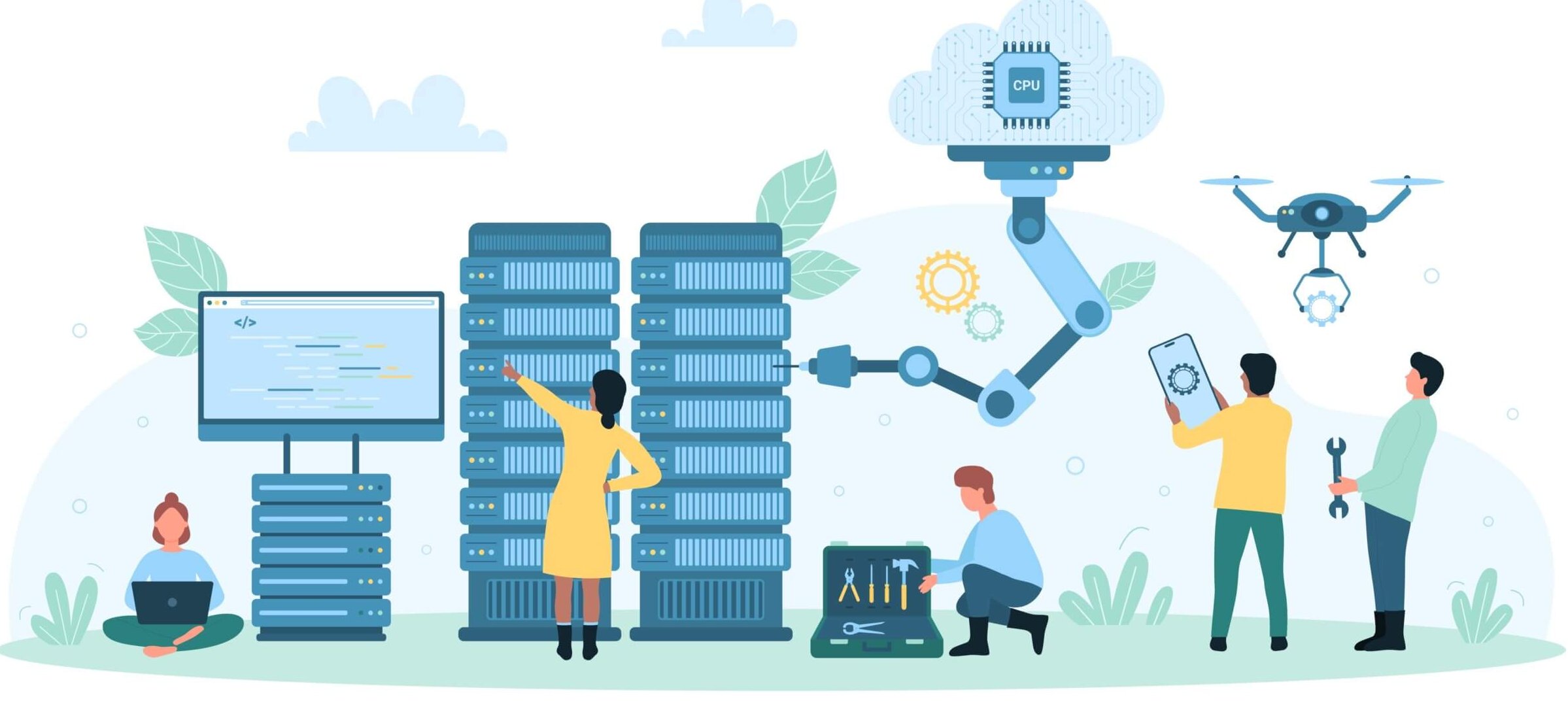In 21st-century business, computing is what makes daily operations, competitive advantage, and strategic growth possible. The foundation that enables this is a hybrid cloud infrastructure that supports business requirements, delivers a suitable user experience, and stays on budget. Mastering the ABCs of infrastructure performance management (IPM) will put you on the road to long-term success.
A is for Assessing your infrastructure
You need to understand all the elements that comprise your infrastructure—the hardware, software, networks, and applications—and how they work interdependently and can affect performance and availability.
B is for Building a performance management strategy
Your business has a strategy, so why would you leave your infrastructure—which is a critical driver for that strategy—rudderless? You need to set performance targets, establish performance baselines, identify KPIs to measure and monitor, and define the roles and responsibilities of different stakeholders, including IT staff, business users, and external vendors.
C is for Continuous monitoring and improvement
Once you’ve mapped out how your infrastructure should perform, you need to ensure that it’s meeting those expectations on an ongoing basis. This requires tools and techniques to monitor performance in real time, identify issues, and troubleshoot problems. And because change is constant, you need to continuously optimize your infrastructure to improve performance, control costs, and ensure it meets evolving business needs.
D is for Data-driven decision-making
Your infrastructure is too critical to manage based on guesswork and too complex to rely on expertise alone. Data analytics and machine-learning tools are essential for identifying trends, patterns, and anomalies in performance data so you can make better decisions about infrastructure optimization, capacity planning, and resource allocation.
E is for Ensuring security and compliance
If you are responsible for managing the performance of your infrastructure, protecting it from cyber threats and complying with industry standards and regulations are part of the package. You’ll need to implement security protocols, conduct regular security and compliance audits, and stay up to date with the latest security vulnerabilities and regulatory requirements.
F is for Fostering collaboration and communication
There are a lot of stakeholders involved in any enterprise infrastructure: IT staff, executive leadership, business owners, external vendors, the list goes on and on. Dashboards and reports must provide views into your infrastructure that reflect the specific information each stakeholder needs. Additionally, it’s important to establish clear communication channels and protocols to ensure stakeholders are informed about performance issues and progress toward performance targets.
G is for Gathering performance data
You can’t manage the performance of your infrastructure if you don’t have information about the performance of your infrastructure. You need to collect sufficient data from various sources, including servers, virtual machines, storage, networks, applications, operating systems, and other infrastructure components. Both breadth and depth of data are critical to monitor your hybrid cloud infrastructure’s performance, utilization, capacity, and health.
H is for Harnessing the power of automation
Automation is a powerful tool in infrastructure performance management. By automating routine tasks, such as system checks and updates, you can save time and reduce the risk of human error. Automation can also help you identify and remediate performance issues quickly, improving the overall efficiency of your IT operations.
I is for Implementing best practices
Your hybrid cloud infrastructure is too complex and too important to build performance management expertise as you go. Implementing industry-standard guidelines and IT operations best practices for performance monitoring, incident management, and change management help ensure your hybrid cloud infrastructure is optimized for performance and reliability.
J is for Justifying performance investments
Maintaining an infrastructure that meets business requirements and performs to expectations requires resources and budget—and it can be expensive. You need to be able to make a business case that outlines the benefits of proposed investments, and perhaps even the likely consequences of not investing. Successful justification requires you to provide credible data and analysis based on your current infrastructure and the anticipated future state.
K is for Keeping pace with emerging technologies
Right now, artificial intelligence and machine learning are quickly emerging as highly effective tools to transform IPM capabilities. Companies adopting AIOps and leveraging AI/ML for performance management, troubleshooting, capacity planning, and other critical functions can fully optimize their infrastructures and gain a competitive advantage. And who knows what may be on the horizon? Staying current with the latest trends and best practices and embracing emerging technologies will keep you at the forefront.
L is for Leveraging vendor partnerships
Your infrastructure uses a lot of hardware, software, networking, storage, and other components, which means you have a lot of vendors—and potential access to their domain expertise. Working closely with your vendors can provide valuable insights into the operation and performance of individual products.
M is for Monitoring performance metrics
You need to track KPIs such as CPU usage, memory usage, network bandwidth, and other critical factors to understand how your infrastructure is performing and identify potential issues, ideally before they have a discernable impact. With the right monitoring tools, you can automate this process and configure alerts when KPIs fall outside of acceptable ranges.
N is for Navigating hybrid/multi-cloud environments
Most enterprise infrastructures consist of on-premises, private cloud, and multiple public cloud environments. You need to understand how to optimize performance within each environment and how its unique characteristics affect the overall performance of your infrastructure. This includes selecting the right environment for each application or workload, understanding the performance metrics, and using the best tools and services to monitor and manage performance.
O is for Optimizing application performance
Application optimization—which includes identifying and remediating performance bottlenecks, optimizing code and configurations, and leveraging performance testing and tuning tools—offers two benefits. You can optimize to boost performance, increasing user satisfaction and business outcomes. You can also optimize to maintain existing performance levels at a lower cost. And sometimes, you can even accomplish both at the same time.
P is for Proactively managing incidents
The worst way to find out about a problem within your infrastructure is to get a call from a user. It’s far better to identify potential issues before they become significant problems. By monitoring performance in real time and flagging trends that could lead to slowdowns and outages, you can reduce downtime and the associated costs and improve infrastructure performance and reliability.
Q is for Querying dependencies
Examining the relationships and interdependencies between the various components and systems in your hybrid cloud infrastructure provides insights into how changes or issues in one can affect the performance of others. This helps identify potential risks or bottlenecks and facilitates proactive measures to mitigate any adverse effects on overall performance.
R is for Reducing mean time to resolution (MTTR)
Reducing MTTR—the time it takes to resolve incidents and return the infrastructure to normal operation—is critical for minimizing downtime and its impact on users and the business. This requires you to establish response procedures, use tools to understand likely impacts and track root cause, and leverage AI to recommend fixes.
S is for Scaling infrastructure for growth
As your business grows, your infrastructure needs to handle increased demand and workloads without affecting performance and reliability. Supporting this growth requires insights about past performance trends, predictive analytics to anticipate future demand, and recommendations for scalable options to meet those needs.
T is for Tuning workloads
A key component of infrastructure optimization is workload tuning. This involves adjusting resource allocation and settings—CPU or memory allocations, storage configurations, network parameters, etc.—to match the specific requirements of each workload for improved performance and efficiency.
U is for Un-silo-ing the troubleshooting process
Because your infrastructure includes so many components—network, compute, storage, etc., not to mention all of the individual hardware and software components—many different teams and vendors are involved. When something goes wrong, this can result in time-wasting finger-pointing. With data-driven troubleshooting and AI-based resolution recommendations, you can avoid turf wars and focus everyone involved on getting the infrastructure back to normal as quickly as possible.
V is for Validating configurations
You want to ensure that the settings and parameters of various components and systems are configured for optimal performance. Ongoing monitoring and alerting will let you know if performance drifts out of band. And with scenario planning and what-if analysis, you can make decisions about changes that will minimize future risks and keep systems operating at peak efficiency.
W is for Workload balancing
Keeping your infrastructure running at optimal resource utilization and performance levels requires you to distribute workloads evenly across systems to prevent any single component from becoming overloaded or overwhelmed. Workload balancing strategies, which may include dynamic workload allocation, load balancing algorithms, and intelligent resource management techniques, can help you avoid bottlenecks, maximize system capacity, and enhance overall efficiency.
X is for eXploiting AI-powered recommendations
With recommendation engines powered by artificial intelligence, you benefit not just from your own infrastructure data but from analytics that incorporate experience gained from working with other enterprises. Recommendations can provide valuable suggestions for many areas of infrastructure management, including resource allocation, workload balancing, predictive maintenance, infrastructure scaling, problem identification and resolution, and more.
Y is for Yielding comprehensive global visibility
When you break down the many data silos—multi-vendor computing, networking, storage, cloud, VMs, containers, databases, and more—you can open up visibility throughout your entire infrastructure. This is critical for unified observability across all of your private and public cloud environments.
Z is for Zooming in on data
Breadth of infrastructure data is critical—but so is depth. Systems that lack granularity, for example, because they use sampling or averages, can deliver “insights” that are misleading and can steer you to make suboptimal decisions that ultimately result in inefficiencies.
Keeping your hybrid cloud infrastructure running at peak performance
Your hybrid cloud infrastructure must meet the business’s functionality, performance and availability, security and compliance, and cost requirements. Managing all of this complexity requires sophisticated technology and deep expertise. Virtana can help. Virtana Platform is a highly modular, scalable multi-cloud insights platform that offers Infrastructure Performance Management, Capacity Planning, Cloud Cost Management, and Workload Placement to manage your entire hybrid cloud infrastructure more effectively. Try Virtana Platform for free
Marc Bachmeier
Sr. Product Manager, Virtana




